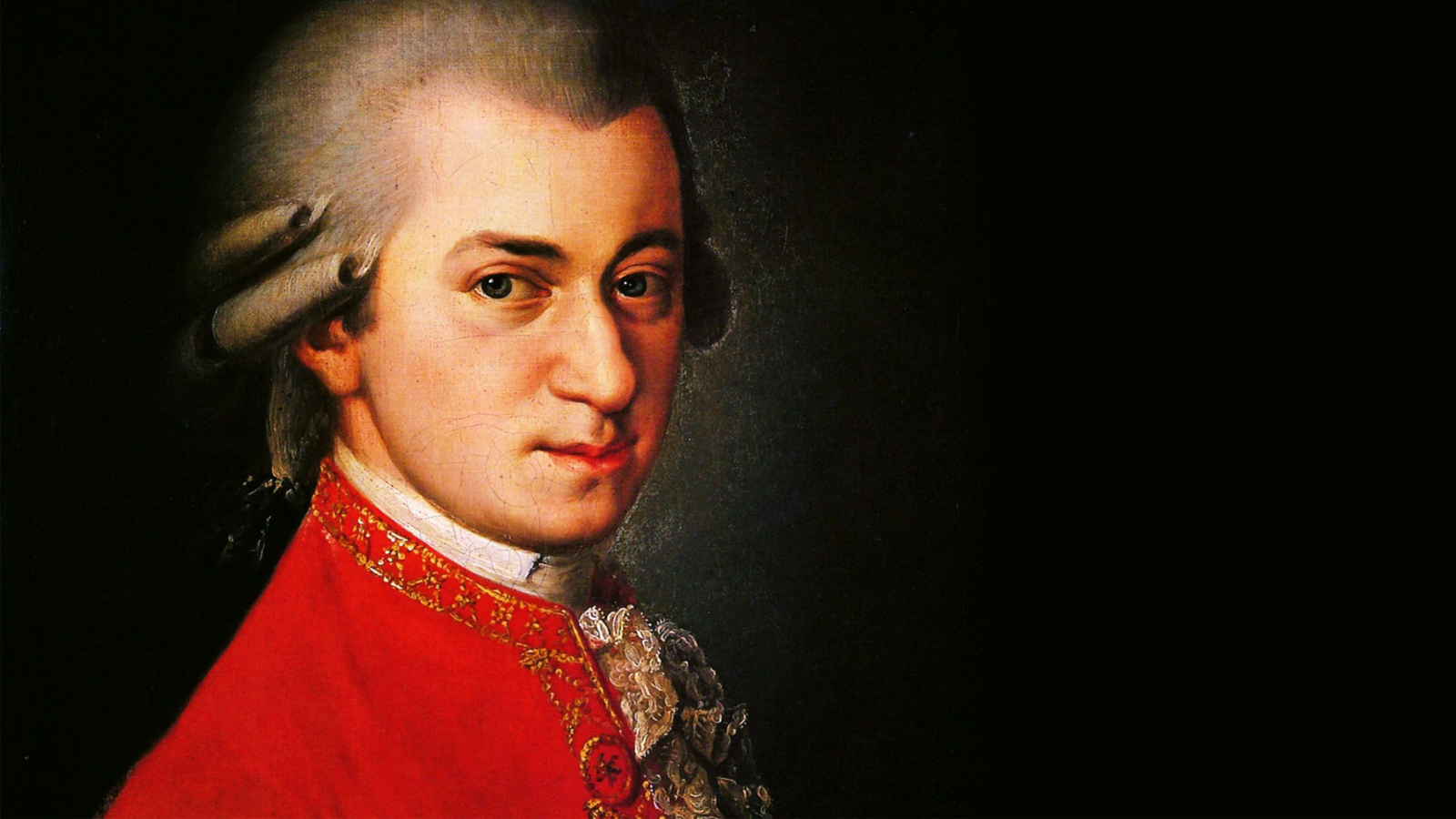
No. 40
Mozart’s Symphony No. 41 in C, K. 551, “Jupiter”

Mozart’s last symphony was called by Sir George Grove, the man responsible for the magisterial Grove’s Dictionary of Music & Musicians “the greatest orchestral work of the world which preceded the French Revolution.” When 151 of today’s most prominent conductors were asked to choose the 20 greatest symphonies ever written, Mozart’s Symphony No. 41 came in third on the list. Only two of Beethoven’s symphonies ranked higher: the 3rd, Eroica and 9th, the Choral.
In the early summer of 1788, Mozart wrote his last three symphonies one right after another, ending with Symphony No. 41. Mozart seems to have been contemplating a concert mounted in his own behalf in which these three new pieces would provide the back bone of the program. No such concert was ever arranged.
It was also about this time that the German born violinist and composer, Peter Johann Salomon, then living and working in London began asking prominent Viennese composers if they wouldn’t come to London where he would present them and their music in a series of concerts devoted to the orchestral music that the London public couldn’t seem to get enough of. Salomon was not looking for operas, he was, instead, looking specifically for instrumental music, especially symphonies. Franz Joseph Haydn and Mozart often talked about the possibility of making the trip. And, in fact, when Haydn was in London in 1791 working with Salomon, he wrote to Mozart urging the younger composer to pack his bags with symphonies and hurry over. So Mozart may have written these symphonies with an eventual trip to London in the back of his mind. In any case none of the symphonies seem to have been performed in the few years Mozart had left to him.
The late conductor Nikolaus Harnoncourt always maintained that Mozart’s last three symphonies were meant to be played together. The first composed, the Symphony No. 39 in E-flat begins with a grand and lengthy introduction but after about 30 minutes, it ends abruptly with just a cursory coda. While the last piece composed that summer, the Symphony No. 41 in C, “Jupiter” begins curtly; its initial chords sounding like a gavel calling a meeting to order. Yet the Symphony’s finale is the most elaborate symphony movement Mozart ever wrote. As Sir George Grove noted, “it is for the finale that Mozart has reserved all the resources of his science, and all the power, which no one seems to have possessed to the same degree with himself, of concealing that science, and making it the vehicle for music as pleasing as it is learned. Nowhere has he achieved more.”
The English have always shown a special fondness for Mozart’s last symphony. It was the same Peter Salomon who urged Mozart to come to London who, when presenting the Symphony No. 41 for the first time to London audiences, first called it “Jupiter.”
Top 40 Countdown
A few years ago the listeners to WNED Classical told us what they thought a TOP 40 list of Classical pieces should be. Six hundred and twenty-two different pieces were put forward, and over nine hundred listeners participated. The result, The WNED Classical Top 40, was both startling and comforting. There were a number of surprises, Stravinsky and Copland made the list; Mendelssohn and Schumann did not! It was comforting to know that the two most popular composers were Beethoven and J.S. Bach. The biggest surprise of all was the piece that crowned the list as No. 1.